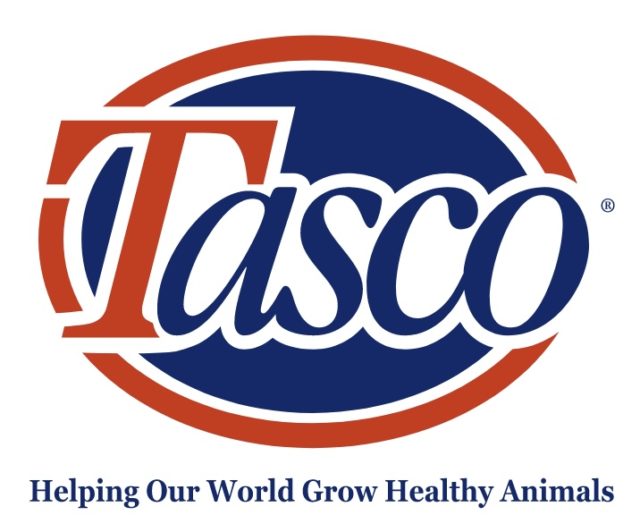Dairy producers gathered for the morning session at the 32nd annual South Western Dairy Symposium on Feb. 19 to learn how well the dairy brand is doing today and what can be done for the future.
Speakers included Caroline Khoury, director of marketing with Dairy Farmers of Canada; Cheryl Smith, executive vice president of sales and marketing for Parmalat Canada; and Ron Tite, president of The Tite Group.
Three-point strategy
Being responsible for the generic promotion of Canadian dairy products, Dairy Farmers of Canada (DFC) is the national policy, lobbying and promotional organization representing Canadian dairy farmers, and it strives to create stable dairy industry conditions.
With more than 14 years of experience with DFC, Khoury presented the organization’s new long-term strategy for consumer promotion programs.
The promotion strategy will fall under three categories: expansion of wellness aura, promotion of dairy farmers and industry image, and strategic partnerships.
“The 2014 marketing campaign was well equipped to strike an emotional chord with consumers and give them a reason to care about getting enough milk products every day. The campaign launched in April 2014 with above-standard results,” explained the video Khoury played.
She also discussed one of DFC’s current campaigns (milkeverymoment.ca). The website shares dairy-inspired recipes. “It is another way to promote the health and emotional benefits and the love of milk,” Khoury stated.
In regards to “dairy image,” DFC plans to create an emotional bond with consumers through effective advertising. Khoury explained, “If we want the consumer to be loyal to products, we need them to be predisposed to the products and the value of them.
They need to trust and believe in those products and in the benefits as well. The goal of this segment is to maintain consumer appreciation for the dairy industry and also to maintain the level of trust.”
Khoury then played the current DFC ad where the camera follows a young boy growing up on a dairy farm.
Applying content integration on television, Khoury shared the recent example of the Steven and Chris show on CBC where they visited Summitholm Holsteins, owned by Joe Loewith and sons.
“The best thing about this is that we are conveying a deeper message to the consumer, but in a fun and entertaining way so they are more and more receptive to receive those messages,” Khoury explained.
Development of strategic partnerships, for example with Tim Hortons and Pizza Nova, is important. “This is crucial to grow the market, as it will allow programs and initiatives to be much closer to the consumption by consumers,” she said.
DFC will continue to focus on developing partnerships with all of the key players in the food chain, such as the processors, distributors and retailers across the country.
DFC’s approach to partnerships is with the intention of growing sales in the category through new channels, new products, new targets or nutrition education.
It also offers platforms, such as public trade shows, to address the public. “I think we all have to work together to grow and protect this dairy industry,” Khoury concluded.
Successful campaigns
Smith, who has been recognized as one of Canada’s 100 most influential women in business, discussed dairy processor Parmalat Canada’s product advertising campaigns.
Parmalat’s business is significant in Ontario and Quebec, as well as Alberta, and operates in all key categories and across all channels.
The processor is in food service, ingredients and export, as well as the retail channel with dairy and deli cases. Smith stated, “There is limited growth in Canada, so you have to be strategic to find ways to develop the market.”
Parmalat has leading brands, such as Astro, Lactantia, Black Diamond and Beatrice, to name a few. Lactantia Butter is number one in the market, as well as Black Diamond Cheestrings.
Playing video examples of Parmalat advertisements, Smith shared insight on previous successful advertising campaigns. Lactantia Pur Filtre milk is the processor’s best performing and iconic ad, with the slogan, “If it’s not Lactantia, it is not Pur Filtre.”
Being number one for brand association, Smith added, “Dairy farmers loved this ad; we ran it for a long time. It romances the milk. This brand has elevated itself to beyond consumers’ minds and awareness to consumer hearts – an emotional attachment. Consumers craved seeing this ad and then, of course, craved milk.”
Parmalat also recently brought back the nostalgic milkman ad to television, “bringing consumers back to a simpler time and place when values meant something,” Smith explained.
Cheestrings are a true Canadian innovation by Parmalat, and the product has achieved increased growth since its launch in the early ’90s. Promoting this product, Smith said, “We need to play to Mom on this, as Mom needs to approve the nutritious snack; however, we really want to talk to the kids.
So that is what we do with our advertising and promotion; we integrate the two.” One high-performing ad has the slogan: “Cheestrings; 100 percent cheese – 100 percent fun.”
Engaging consumer promotions are also part of Parmalat’s strategy. Running three contests a year for this product, Smith used the example of the Cheestrings and Pirate promotion, stating, “Kids were engaged and motivated by social media and participation online, but moms love the big prizes such as cash or a family trip.”
In closing, Smith stated, “We want growth in the industry, not increased prices for increased revenue.”
Rewriting the marketing rules
The Tite Group, a content marketing agency based in Toronto, has created advertising campaigns for Kraft, Microsoft, Volvo, Air France and many others. Tite, having no dairy connection to the industry, offered fresh ideas and new perspectives that enlightened the audience and filled the room with laughter.
Demonstrating how to connect with consumers, Tite used numerous humorous examples to present advertising do’s and don’ts. Tite stated, “It is very important that every person behind the brand needs to be on the same page.”
Tite then shared a story of when he was on a flight when the WestJet CEO took the mic and introduced himself, welcoming the passengers and thanking them for choosing WestJet. “WestJet had great success portraying how they care about their brand and clients,” Tite explained.
Due to the advent of smartphones, apps and the explosion of social media, battling for consumer time and attention is the world we are living in today. Tite stated, “The cost of production came down overnight. Brands and media properties weren’t the only ones who could afford to shoot broadcast-worthy video and images.
We also empowered consumers with a massive distribution network that put their works in front of millions in a millionth of a second.
Before you know it, brands were competing for attention with content that was more relevant, more interesting and timely. You’re not competing against other beverages or other dairy producers, you’re competing against the Internet.”
Tite continued, “Consumers used to vote with their wallet. Now it is a battle for their time. They have a million other things at their disposal that they are way more interested in. People are tired of being ‘pitch-slapped.’ They are tired of all the messages.”
He added, “So what do we do? We have to stand for something greater and elevate the conversation to something beyond the product.” Explaining further, he continued, “We define ourselves by three things: health, simplicity and design. But when we believe in something greater, we just apply those to different products.”
Tite used the example of Red Bull, which stands for something greater. “The product has a role to play, ‘gives you wings,’ but they stand for something greater, making the product actually second in importance.
The belief is more important than the product. That stuff is cutting through. Why? Because they are competing against everyone and stand for something greater.”
Know your audience; this is the world we are living in. For example, last summer Coke created customized cans with customers’ names, making it personal. “There is nothing you love better than hearing the sound of your own name,” Tite said. “Something that is targeted to consumers as individuals.”
Tite continued, “We share a lot of data, and people are tired of hearing about it. It’s the stories behind the data that are far more important.
That is what is so great with Dairy Farmers of Canada’s advertising efforts. Those are the stories that really connect with people, especially when they are real. You also have to add value – this is what consumers are looking for.”
“People are skeptical, and the best way to deal with it is through complete honesty and transparency. Because the new media landscape finds people and brands that are not,” he declared.
“There is no more exciting time in advertising than right now. It is the Wild West. Rules are being rewritten, and things are changing every day,” he concluded.
What was clear after the morning’s insightful presentations is that with producers, processors and organizations sharing marketing goals, branding dairy for today’s consumer is a group effort for the future sustainability of the dairy industry in Canada. PD

- Lora Bender
- Editor
- Progressive Dairyman









